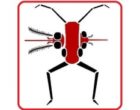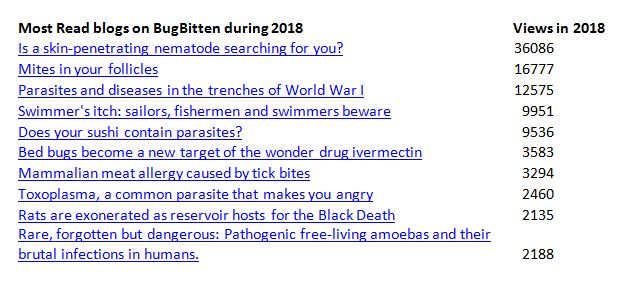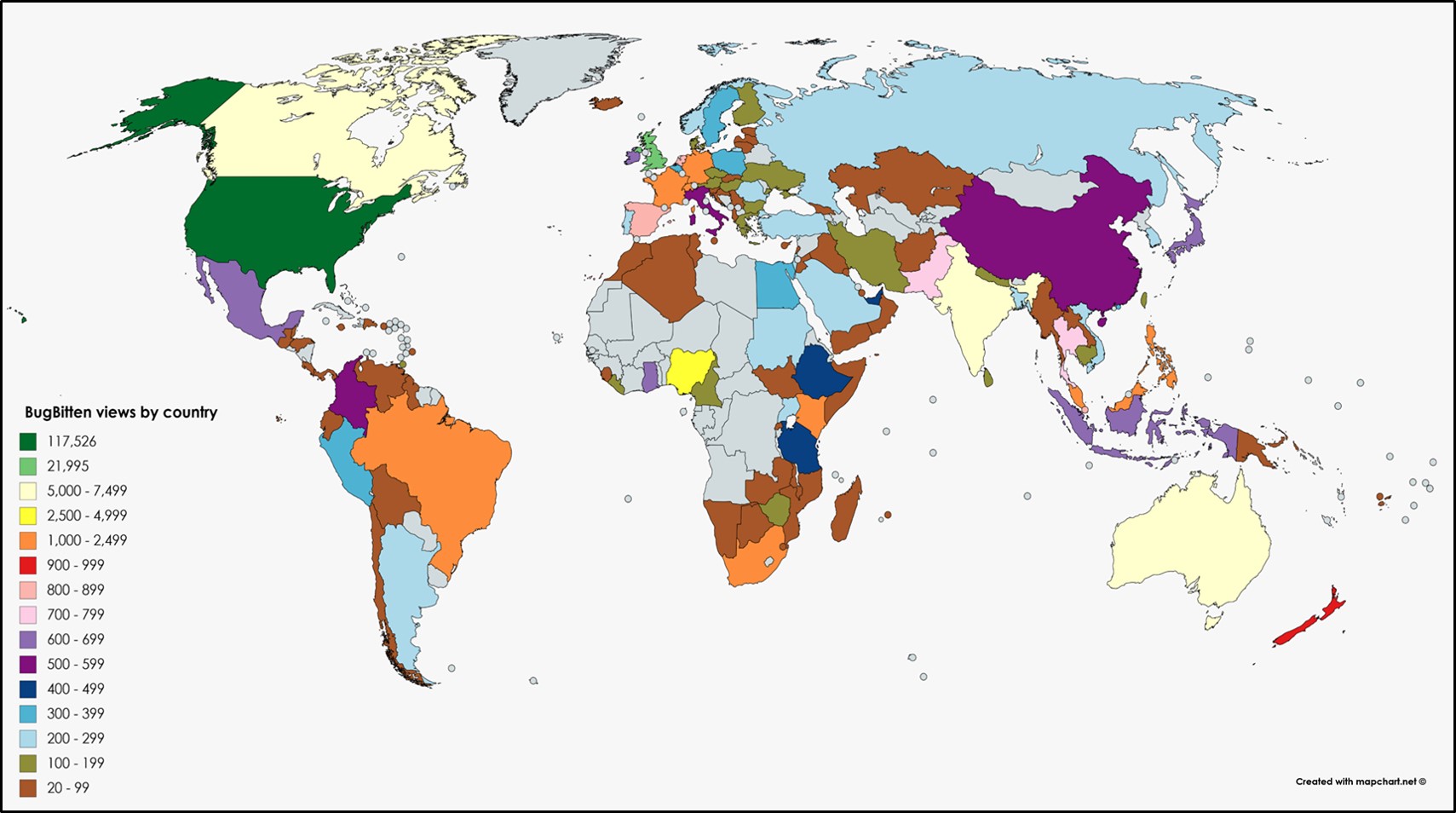
Hosted by Parasites and Vectors, BugBitten is a blog for the parasitology and vector-borne disease community, from undergraduates taking courses in parasitology to senior researchers, lab leaders and educators. We aim to keep the community informed of new developments in our field and hope to interest and even surprise our readers with news and views outside their main sphere of study.
“Being one of the original bloggers it’s been amazing to see how much our readership has grown in 5 years. I’m glad I’ve stuck with it through different jobs and now my PhD, because it has hugely improved my writing skills- so much so that preparing manuscripts is no longer a daunting task. Through Bugbitten I’ve collaborated with scientists around the world and it’s always great to meet people at conferences and find out they read the blog!” – Vera Unwin
Beginnings
 Our first blog, introducing BugBitten, was published in September 2013. The following month, a small group of keen bloggers, initially organised by Kevin Tyler, got off to a good start by publishing 10 blogs on a variety of topics. We soon settled into a pattern, with blogs appearing regularly on Fridays and sometimes also on Tuesdays. Together with Srimathy Sriskantharajah, associate publisher at BioMed Central, three of the original bloggers, myself, Krisztian Magori and Vera Unwin are still making regular contributions, five years later.
Our first blog, introducing BugBitten, was published in September 2013. The following month, a small group of keen bloggers, initially organised by Kevin Tyler, got off to a good start by publishing 10 blogs on a variety of topics. We soon settled into a pattern, with blogs appearing regularly on Fridays and sometimes also on Tuesdays. Together with Srimathy Sriskantharajah, associate publisher at BioMed Central, three of the original bloggers, myself, Krisztian Magori and Vera Unwin are still making regular contributions, five years later.
How we have grown
Currently, we have 8 editors, who compile, commission and edit blogs. In addition, several people are regular contributors and many in the community have posted guest blogs.
By the end of 2018 we will have published 293 blogs.
Monthly views of BugBitten blogs have risen steadily since we began and reached 24,326 in October this year. All our past blogs are still available in our archive and, to our surprise, most are still attracting interest, years after they were written.

What have we blogged about?
Over the past five years we have often blogged about relevant topics in the news, (for example, the Nobel Prize in Physiology and Medicine) and followed major disease outbreaks across the globe.
Not surprisingly, the parasite most blogged about, with 39 features, has been malaria. These include blogs about cell biology, vaccine development, drug resistance, diagnostics and malaria sexual stages. We have discussed malaria elimination and even looked at malaria in monkeys, Great Reed Warblers and penguins. You can take one of our quizzes on malaria to test your knowledge.

Many of our blogs on malaria also touch on mosquitoes. In fact, blogs about mosquitoes have been the most common ones over the past 5 years. Most likely, this reflects the acknowledgement that, in order to eliminate malaria, we need to focus on breaking the human / mosquito cycle just as much as on vaccine development or drug treatment. Studies involving the use of bednets and insecticide resistance have been covered several times as well as more experimental approaches to mosquito control using genetic modification or Wolbachia. Mosquito ecology, sex life and immune system have also featured, as have the scents that attract mosquitoes and how their feeding behaviour is manipulated by infection.
In addition to the anopheline mosquitoes that transmit malaria, the yellow fever mosquito and its role as a vector of several arboviruses has attracted the attention of our bloggers. None more so than in 2016 when infections with the Zika virus hit the news. That year, 7 blogs were devoted to the virus and the unfolding tragedy of microencephaly. Our bloggers have followed the latest Zika research since then.
We have covered a huge range of other parasites and the diseases they cause, those afflicting humans being the most read this year. Titles are designed to be eye-catching but sadly this may occasionally misfire. The blog at the top of this list of most read this year may have stimulated some of the distressing emails I receive from people seeking diagnosis for symptoms that no parasite I have ever heard of could cause, and who are possibly suffering from delusional parasitosis.
Although not of medical or economic importance and much less known, parasites infecting vertebrate and invertebrate wild life have fascinating life histories. BugBitten blogs have covered new research into many of these. From thorny-headed worms to butterflies and eye flukes, a common theme has been host behavioural changes caused by infection.
Become part of the BugBitten community
Although most of our editors and regular bloggers are based in the UK, our readership is world-wide. The United States, UK, Canada, Australia and India accounting for most views this year.

“I started writing for BugBitten in 2016 while undertaking my PhD in parasitology. Preparing blogs helped me learn to write concisely and informatively, and how to write for a wider audience. I think the variety of topics covered by BugBitten is excellent, and the knowledge and enthusiasm of the authors always comes through in the posts. I would encourage anyone who has a passion for this field to give blog writing a go!” – Cara MacFarlane
We are very keen to extend this readership further, and welcome blogs from anywhere in the world. BugBitten provides an opportunity to showcase your latest research findings, tell us about exciting new work you have seen and share your experience of working in parasitology and vector biology. Advice on how to prepare a blog is available and help with style and language issues can be given. Contact me, the coordinating editor, at h.hurd@keele.ac.uk if you are interested.
Please encourage your colleagues and students to read our weekly blogs, print this poster for your lab wall and follow us on Twitter – @bugbittentweets.
Whether you are a regular or occasional BugBitten reader, we are keen to hear your views to help us improve BugBitten. Do you find our blogs useful and if so how? Are there topics you would like to read about that we are not covering? You can leave your comments below.


Comments